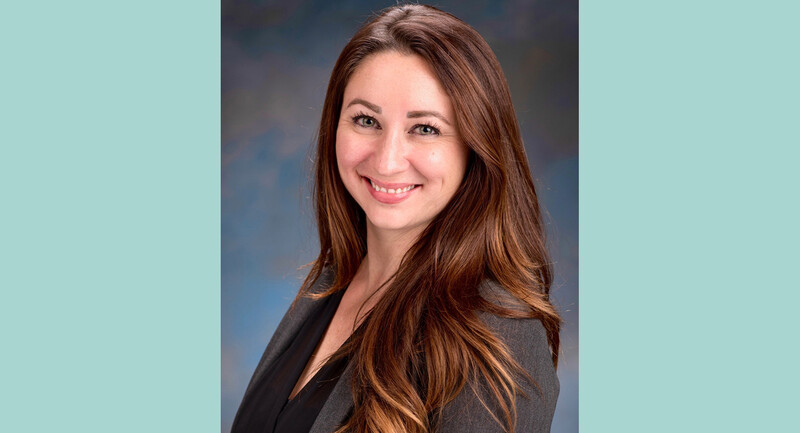Just a few years ago, Clarence Edwards Middle School in the Boston neighborhood of Charlestown, Massachusetts, typified the achievement gap challenge we face across the United States. The middle school, which serves students in grades 6–8, had low scores on standardized achievement tests, an alarming level of bad behavior, and dwindling enrollment. Now, three years later, the school could be a national poster child for school improvement.
What changed? The school redesigned its education approach around expanded learning time.
Much remains the same there. The students still have the sort of demographics that generally overwhelm schools and tend to be concentrated in the lowest-performing schools—about 90 percent of the students qualify for free or reduced-price lunch, about 90 percent are minority, nearly one-quarter have limited English proficiency, and almost one-third are classified as having special needs. The school is still characterized by a high degree of student mobility.
Yet substantial improvements have taken place. In the past, Edwards students lagged far behind the state averages in their scores on Massachusetts's standardized tests. Bear in mind that Massachusetts is a predominantly suburban state with the highest National Assessment of Educational Progress (NAEP) scores in the United States. Eighth graders at Edwards have now narrowed that gap by two-thirds in science and by more than 80 percent in English language arts; they now score substantially higher than the state averages in math.
Failure rates have plummeted across the board, and the percentage of learners scoring in the highest band of success in math, advanced, has gone from about zero to level with the state average—19 percent. Every traditionally challenged subgroup has shown improvement. Just four years ago, only 15 percent of limited English proficient 8th graders reached proficiency in math; last year, 71 percent of this subgroup reached proficiency, compared with the state average of 12 percent.
The greatest opportunity that expanded learning time offers for improving academic achievement comes from being able to better individualize instruction—putting the right teachers with the right students and focusing on the right skills. The single biggest change in the academic program at Edwards was adding an hour each day during which students receive small-group instruction and tutoring in the subject in which they lag most. Students receive either English or math support in the afternoon, with the students who are strong in both subjects focusing on science during that slot. In addition, more time has enabled the school to offer both science and social studies four days each week—twice the previous level.
The academic gains are matched by growth in opportunities for students to participate in enrichment activities. The school has a performing arts program that sends many students to Boston's audition-based performing arts high school—the Boston Arts Academy, also an expanded learning time school. Edwards is the only Boston middle school fielding teams in a variety of sports, including a football team that plays nearby suburban schools. And every 6th grader participates in the Citizen Schools program, which features elective apprenticeships with such professionals as corporate attorneys and software engineers from Google.
There's now a sense of positive energy, enthusiasm, and optimism in the building. Students have learned that through hard work, they can excel against the odds. But this requires time: Monday through Thursday, students at Edwards start school at 7:20 a.m. and finish at 4:00 p.m.—that's close to a nine-hour day. On Friday, their day finishes at 11:40 a.m.
Given the positive results, every middle school in Boston has now petitioned to become an expanded learning time school. And families are interested, too. Just three years ago, only 17 students picked Edwards as their first choice during Boston's middle school selection process. Last year, 250 chose Edwards—there's now a waiting list to get in.
With President Obama and U.S. Secretary of Education Duncan now challenging educators to move beyond a school schedule and calendar developed for a farm and factory era, expanded learning time is moving to center stage. At a time of diminishing resources, American Recovery and Reinvestment Act (ARRA) stimulus dollars are boosting the model because the Department of Education's regulations identify "increased learning time" as a core innovation that schools should promote. But simply expanding time willy-nilly at schools is not a silver bullet for success. We need to follow the example of Edwards—and use the time well.
The Emerging Field
For a long time, expanding learning time was more a vision than a reality. In 1994, the National Commission on Time and Learning issued a report titled Prisoners of Time, which referred to our current schedule as a fundamental "design flaw." The report argued that we needed to go from a system where seat time chiefly determined advancement (that is, time was fixed) regardless of achievement (that is, outcomes varied widely) to one in which we require that all students meet defined learning levels. Struggling students would need more time; advanced students would require additional challenges.
Charter school laws that emerged in the early 1990s gave some education pioneers the chance to create innovative schools. One celebrated example is the KIPP schools. Graduates of KIPP middle schools not only show large academic test score gains, but also carry that momentum forward into higher rates of college completion. One of the program's five core design pillars is an increase in the school schedule by 60 percent: Students attend school Monday through Friday from 7:30 a.m. to 5:00 p.m., a month longer into the summer, and about 18 Saturday mornings each year.
Two other leading charter management organizations—Achievement First (www.achievementfirst.org) and Uncommon Schools (www.uncommonschools.org)—also expand time with good results. Harvard Professor Roland Fryer (Dobbie & Fryer, 2009) has recently shown that New York City's Harlem Promise Academies, part of Geoffrey Canada's Harlem Children's Zone, drive large gains for participants. By extending the school day and offering tutoring on Saturdays and in the summer, the academies provide 50 percent more time for all students and 100 percent more time for those who struggle the most. The most persuasive evidence of the importance of expanding learning time to drive academic gains comes from Caroline Hoxby's major ongoing study of all New York City charter schools. She recently analyzed 30 different design variables at these 42 schools—such as curriculum, approach to discipline, teacher pay structures, and schedules— and found that the feature most convincingly correlated with academic success was increased learning time (Hoxby, Murarka, & Kang, 2009).
Our organization, the National Center on Time and Learning, has just published the first national census of expanded time schools (Farbman, 2009). We identified 655 such schools in 36 U.S. states and the District of Columbia. These schools add, on average, about 25 percent more time each year—or the equivalent of three extra years of school for students who attend such schools for their entire school career. Longer days account for most of the time expansion, but 20 percent of the schools have lengthened the school year as well.
These schools serve the neediest students in the United States. Students in expanded time schools are twice as likely to be minorities, and two-thirds are poor. Three-quarters of the schools are charters, but the most rapidly growing group is in-district conversions. We were heartened to see that these expanded time schools show higher academic achievement than the average for their host districts (Farbman, 2009).
For Whom Should the Expanded Day Bell Toll?
The most compelling initial target for expanding learning time is middle-grade students in high-poverty schools. The notable success of many expanded learning time schools at this level provides strong encouragement that this approach can succeed.
Children in our highest-poverty middle schools rarely participate in many programs so familiar to their more affluent peers—tutoring, summer institutes, martial arts courses, science camps, sports leagues, and the like—and rarely have strong homework support at home. For these students, schools must be muscular enough to get most of the job done.
Middle school is well documented to be the level at which students seem to diverge into two groups. One group tends to be well socialized to school, proficient academically, and on a strong path to high school graduation; the other group tends to show alienation from school and become at high risk of dropping out.
Through strong core instruction combined with individualized support, expanding learning time can ensure that at-risk students keep up academically; develop attachments to school through such activities as sports, arts, and drama; and develop the beliefs and behaviors consistent with success.
Many elementary schools have benefited from expanding learning time by both raising academic achievement and providing a well-rounded day. More learning time could benefit high schools as well, but to lesser effect in the context of the traditional high school structure. There are a number of impressive high schools across the United States that use expanded learning time, but expanded time did not drive their conversion. Rather, these schools have radically redesigned how they operate, and they happen to need and use more time to get the job done.
A Good Fit
To succeed, expanded learning time has to work for teachers, students, parents, and the education system. In general, teachers agree that they don't have enough time to help all students reach their academic goals, especially when students are already lagging. Teachers usually welcome the improved pace that expanded learning time provides as well as the opportunity to engage students in a wider variety of instructional approaches, including more project-based learning. Teachers' unions want to ensure that established teachers are offered choice and that they receive adequate compensation for more time. Charter schools usually recruit with the longer schedule as part of the plan and sometimes with moderately higher overall pay.
Students are often initially skeptical when they hear about expanded learning time, especially older students. But once they experience it, they typically accommodate to it quickly as their standard schedule. Many students are pleased with the far greater opportunities for enrichment and engagement through art, music, drama, robotics, sports, and the like. They also notice that their teachers have more time to support them and that their achievement typically improves.
Parents often flock to expanded learning time schools when they are available. They usually believe that with more time, schools can help their children do better academically; they also appreciate the better match between their work schedules and their children's school schedules. Affluent parents are more divided in their reaction to potential expansions of school schedules because they have often already invested time and money in placing their children in structured, supervised out-of-school activities to complement the content and schedule of school.
School districts are often eager to identify new levers to drive achievement gains in their lowest-performing schools. Their greatest challenges are finding the necessary funding and accommodating schools working on a different schedule. Charter schools, which have blazed the path, face fewer such challenges, although many raise private funding to help meet the greater costs.
With a Little Help from Uncle Sam
It takes resources and incentives to turn will into reality. In the final Race to the Top guidelines issue in November 2009, the U.S. Department of Education calls for time to be "significantly increased" and points to our research—that a minimum of 300 hours per year is necessary to effect real change. The department indicates that for schools to see the greatest improvements, they need to fully integrate expanded learning time and implement a balanced approach that provides more time for core academics, for enrichment subjects, and for teachers to collaborate and improve their craft. This high-bar definition rules out the possibility of schools adding only modest amounts of time for some students and calling it sufficient.
The Department of Education has laid out the acceptable approaches for state, district, and school use of American Recovery and Reinvestment Act (ARRA) funding to turn around the lowest-performing schools. Of the four alternatives defined, two models, turnaround and transformation, require the use of increased learning time. These regulations bind the new competitive programs— Race to the Top and Investment in Innovation (i3)—but also cover the longer-term School Improvement Fund. The latter has attracted less fanfare but deserves more attention: ARRA boosts this fund to $3.5 billion, which will flow to all 50 U.S. states, and as an element of Title I it will likely endure well beyond the life of the stimulus package.
Ten Keys to Success
In view of these developments, the increased learning time movement is likely to spread. The following keys are crucial to a successful implementation of expanded learning time for disadvantaged students.
Key 1: Schools must allot a sufficiently large amount of expanded time.
Modest amounts of increased time will not help schools reach their goals. In our experience, schools need a minimum of 300 hours each year—or an additional one hour and 45 minutes each day—to establish a balanced program and drive deep change. Successful expanded learning time schools range from those that offer about 25 percent more time to those that offer as much as 60 percent more time (for example, KIPP schools).
Key 2: Schools must fully integrate expanded time into a redesigned overall schedule.
Visitors to expanded learning time schools often ask, "At what time should I come to see the expanded time?" The additional time, however, is not tacked on to the end of the traditional schedule but rather is deeply integrated into a wholly reenvisioned day. A school could extend a math or English language arts block from 45 minutes to 60 or 90 minutes; add time every day for social studies, science, or physical education; add an elective enrichment class in the middle of the day while core teachers are freed to collaborate in work groups; or expand time for lunch and recess.
Key 3: Schools should allocate expanded time to a balanced program.
Although most schools adopting expanded learning time want to drive academic achievement gains, there should be a healthy balance between the added depth allotted to core academics and the added breadth allotted to restore a well-rounded education. Schools should also strike a balance between expanded time for students to learn and for teachers to collaborate and improve.
Key 4: Schools must prioritize and focus expanded time.
Although expanded learning time is a welcome opportunity for principals and teachers because it holds the promise of benefiting all students, the most common mistake we have seen has been the failure to prioritize and focus. Some schools set out to do too many things and end up doing none of them very well. Including too many electives and enrichment opportunities can take away from the core mission of improving student achievement. It is important not to substitute a shallow exposure to many fields for a deeper mastery of one or two areas.
Key 5: Schools should change the schedule for all students.
This does not mean that all students have the identical schedule. On the contrary, expanded learning time allows for greater personalization, with students getting the level of intensive support or added challenge their skill levels dictate as well as the variety of education experiences that all children deserve.
Students accept the schedule as a fact of life, a crucial feature for middle and high school students who are unlikely to volunteer to stay longer after school. When all students stay, there is no sense of academic detention for some. The school can redesign the whole schedule; some students will be in music at noon whereas others will be in math at 3:30. Changing the schedule for all students commits the whole school to lasting institutional change.
Key 6: Schools should engage in a schoolwide planning process.
Drawing the faculty and community into the process of considering whether and how to expand learning time is an important opportunity to reinvigorate a school and gain buy-in from the people who will have to make it work. When done well, the process also forces a school to self-examine and use data to define strengths and weaknesses. A good planning process enables a shift to a data-driven, continuous-improvement culture, which is essential to long-term success.
Key 7: Schools should focus on strengthening core instruction and personalizing learning.
Successful expanded learning time schools are deeply committed to raising the quality of core instruction in every classroom through the use of data and collaborative improvement. In addition, these schools use frequent, well-aligned formative assessments to properly assess individual students' strengths and needs and to place students into well-designed interventions aimed at helping them catch up. Many successful expanded learning time schools offer students an extra class each day in the subject in which they struggle the most, with classmates at a similar level and a teacher who has expertise in this area. Some offer small or one-on-one tutoring sessions.
Key 8: Schools should offer engaging enrichment and opportunities for both exposure and mastery.
Enrichment opportunities that are structured as electives, taught by both teachers and outside partners, and interspersed throughout the day and year can engage students who are becoming increasingly alienated from school and who are at risk of dropping out. Students should have the opportunity to experience a wide variety of activities and achieve mastery in at least one of them.
Expanded learning time offers the opportunity to embed considerably more time for teachers to work together by grade or department and focus on specific instructional strategies that they can immediately put to use. However, it is easy to squander this time on low-intensity or administrative efforts and miss the chance to improve instructional effectiveness.
Key 10: Schools must change student and teacher beliefs and behaviors.
A growing body of evidence suggests that an optimistic belief that hard work will pay off is crucial to turning around our lowest-performing students and schools (see Blackwell, Trzesniewski, & Dweck, 2007). Struggling students from disadvantaged backgrounds often need help seeing that hard work will be rewarded with success and that delaying gratification and pursuing long-term goals are necessary.
Many teachers believe that with more time, they could succeed with far more struggling students. Expanded learning time enables students to do more of that hard work together and with teacher supervision—as opposed to the solo nature of homework—and allows more intentional efforts to build school community culture and values.
Not Solely Sufficient
If adding time alone were sufficient, every expanded learning time school would be a great success. But not every expanded school succeeds. Experience shows that a cluster of related school reforms needs to happen to enable the sort of performance one sees at Edwards Middle School or a high-performing KIPP school. At least three other drivers are key to success.
First, schools need high levels of human capital or, in plainer language, a strong principal and highly effective teachers. The process of planning for and implementing a redesign around more time is an extraordinary leadership opportunity for a principal who is a true instructional leader. Well-led schools can recruit and train excellent teachers and hone the skills of all incumbent teachers by using fair evaluation systems to ensure high standards.
Second, schools need to use data-driven instructional approaches. Although most schools in the United States might claim they use such approaches, this has not been our experience. Managing individual students' instruction on the basis of objective measures of their progress while using broader data to drive the discussion of how to improve enables school faculty to use added time most effectively.
Edwards initially used homegrown data to assess students and match instructional supports to their needs. More recently, the school has partnered with the Achievement Network (www.achievementnetwork.org) to implement six interim assessments each year; the resulting data drive professional development. The school credits this practice with a major surge in its third year in instructional effectiveness in English language arts. Third, schools need to focus on building high-performance cultures in which teachers and students expect to succeed. Planning for expanded learning time leads naturally to a healthy discussion about the performance goals a school should pursue. We also encourage policies that require an agreement on goals between the school and the district or state. We favor focusing on exit-year proficiency—shouldn't the school's overall goal be to prepare its graduates for the next level of education?— and on including, in addition to academic goals, measures of student engagement and commitment.
Where We Go From Here
The movement to match learning time to student needs is still in the early stages of development. We need to dig down into the specific classroom practices that expanded time enables and figure out which ones are the most effective and which ones we can most readily scale up. We need to learn how to better use the resources of people, time, and money. For example, to what extent can we use staggered start times for teachers and community-based organizations? Although many of the most successful schools have all teachers at work for all of the expanded schedule, it may be more cost effective and broadly applicable to find ways to vary the approach.
The challenge will be to use the wave of resources from federal ARRA funding to launch thoughtful, well-targeted expanded learning time efforts. We need to understand how to use more learning time well to ensure that the U.S. ideal of equal opportunity for all through excellent public education becomes the norm—and not the celebrated exception.








